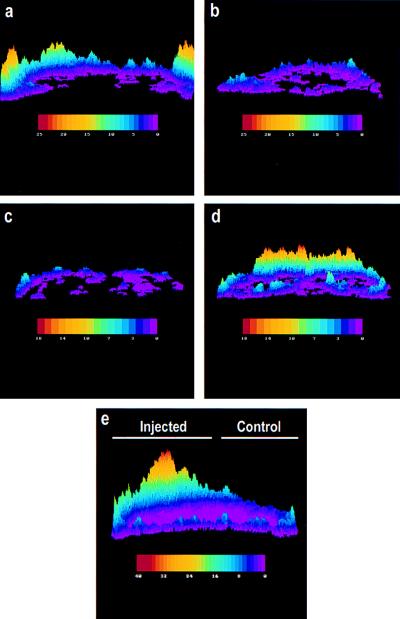Figure 3.
Expression of the Rfz-2/β2AR chimera in zebrafish embryos results in appearance of ISO-stimulated calcium transients. The composites of fura-2-dextran fluorescence ratio–image analysis represent the frequency of intracellular Ca2+ transients in embryos injected with RNA encoding Rfz-2/β2AR and then treated with drugs for 20 min before imaging. (a) A representative embryo perfused with a solution of β-adrenergic agonist (ISO, 100 μM) to stimulate the receptor. (b) A sibling representative embryo perfused with a solution of β-adrenergic antagonist (propranolol, 100 μM). (c and d) A representative embryo was treated with β-adrenergic antagonist (propranolol, 100 μM) for 20 min, imaged for 20 min (c), and then switched to agonist (ISO, 100 μM) for 20 min and imaged (d). (e) As a control, one-half of a zebrafish embryo was injected with Rfz-2/β2AR RNA in Texas Red dextran, and the embryo was challenged with ISO. Note that only the half of the embryo microinjected with Rfz-2/β2AR RNA (determined by Texas Red fluorescence; not shown) displays a calcium transient in response to challenge with ISO. Data were collected during the time of mesoderm induction between the 32- and 64-cell stages and the 1,000-cell stage. The pseudocolor ratio images represented in this set are a compilation of a 20-min time course in which the color bar represents the number of transients: red denotes high numbers, violet represents lower numbers, and the peaks represent more active regions.

